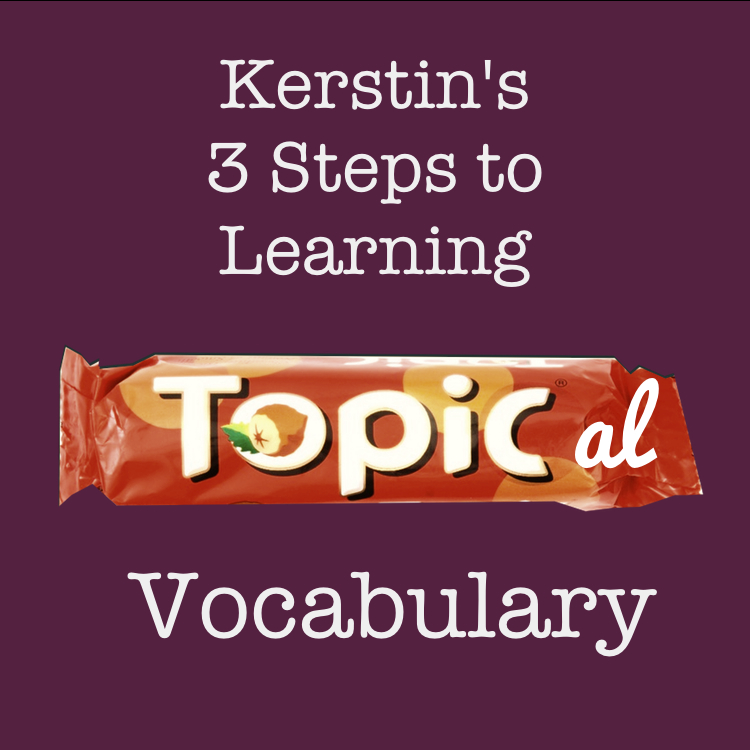Topical vocabulary means the words and expressions that all relate to one topic, for example cookery, education or firefighting. Today's article introduces a foolproof 3-Step Method, plus get involved by posting your next vocab topic in the comments, and we'll feature you in a blog article next year.
Why is this useful?
If you make it your goal to learn all the words in a language, you'll never know when you're done. Setting a goal like "500 words" is also though, because who counts all the new words they're learning?! So bring on the topical approach. You can get into a topic you're interested in and feel like you're really getting somewhere.
Learning topical vocabulary is not difficult - here are 3 steps to success:
1. How much do you know about this in English or your native language?
The key here is to set your goal posts right, so that you'll know the detail of what your topic is all about. Plus, remember that language is never isolated from what it talks about. In other words, the success in remembering vocab is based on knowing what you're talking about. If you want to write like an expert about history, better know the facts before the words.
For example, I once worked at the fabulous Panaz, who make all kinds of flameproof fabrics. I was their Export Sales Administrator, on the phone all day taking and confirming orders in French. I could have learnt all the words for fabric and upholstery I wanted, but these customers wanted someone who first knew her stuff, and then knew all the words for it.
So here is Step 1: Be sure you know what you're talking about, and then you'll know which words and expressions you need.
2. Note it down, then relax-repeat-remember
Forget talent - repetition is the heart of success. Many people recommend "SRS", which means a spaced repetition system. In other words, you will have to go over words again even if you remembered them today. The repetition of running through those lists is what makes it go in, so it's got to be a routine for a week or two. Remember Fluency MC? It's relax - repeat - remember.
For more ideas on getting that vocabulary to stick, check out 6 Techniques for Learning Vocabulary.
Step 2: Follow the 3 R's: Relax, repeat, remember.
3. Test yourself twice
It's easy to check how many words you know, so make your first test an article in the paper and a TV show about your topic. With libraries, the internet, YouTube and Facebook at your service, I challenge you to find something you couldn't read a lot about in almost any language. How about searching for the #tag on Twitter (see below)?
Now for the second test, maybe a little bit more daunting but this is going to be more fun too: Have a conversation, chat about the topic, go listen to someone and say what you think! Of course it should be possible to bring most conversations around to your chosen topic (and an amusing challenge, too!) eventually, and then throw in the new words, ask questions and feel the power. You've just become an expert!
Step 3: Test yourself once by consuming, and twice by producing language.
Twitter search result for "Flameproof" in German - there really is media for anything
Favourite topics?
As always, I want you guys to get involved and think about how this article will serve you best, so you are invited to write a comment below and tell me what your vocabulary topics are. How about Christmas, cookery or knitting? Or look at the cool Sally Holmwood, who's currently studying personal banking words for her part-time job in an international bank.
Don't miss out on the launch of the Fluent Guide to Vocabulary Learning for Self-Directed Language Learners.
Thanks for reading this article on Fluent - The Language Learning Blog. Don't forget - if you sign up to our newsletter, you will receive a free Guide to the Best Language Learning Resources!







